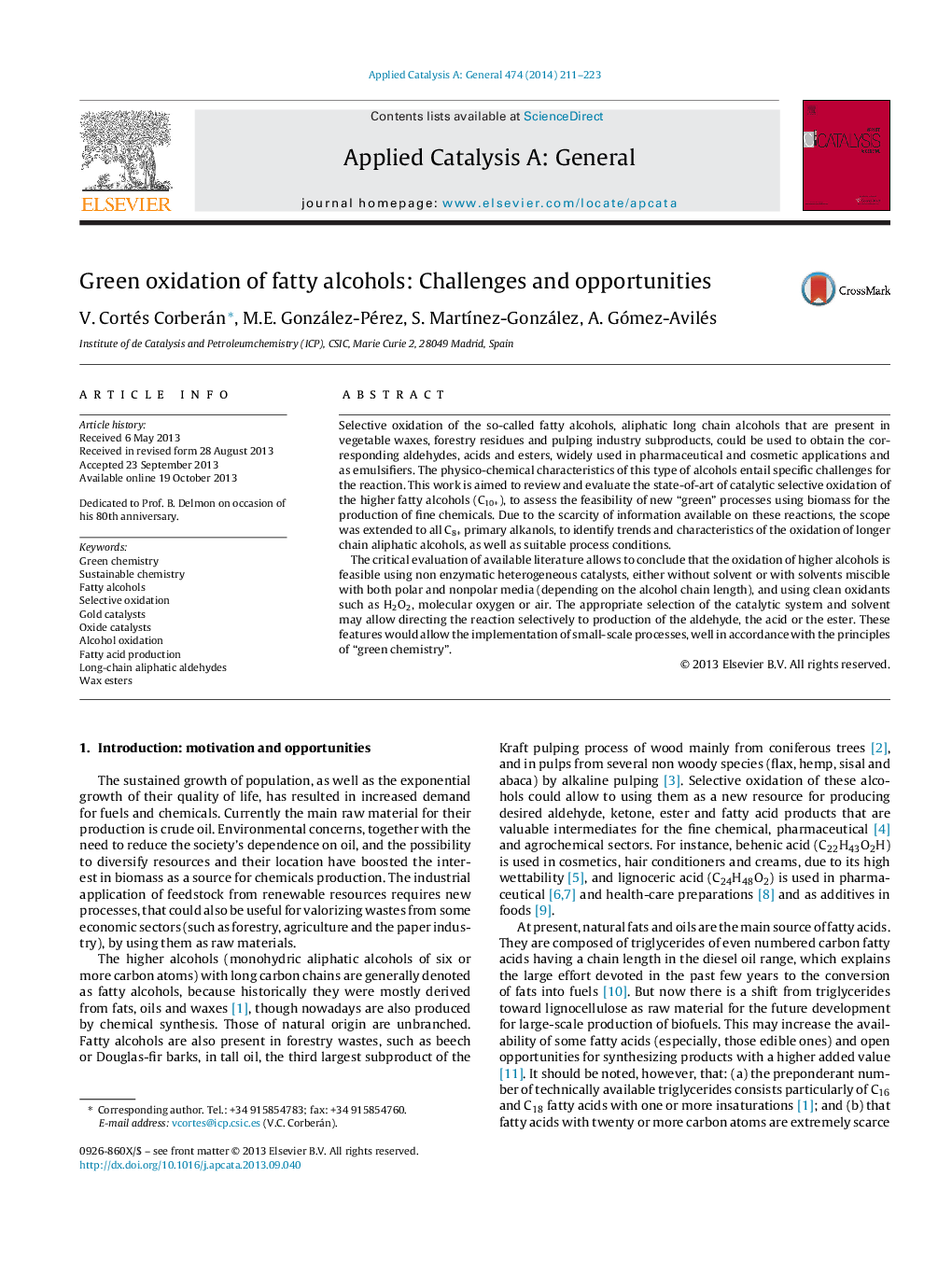| کد مقاله | کد نشریه | سال انتشار | مقاله انگلیسی | نسخه تمام متن |
|---|---|---|---|---|
| 39942 | 45840 | 2014 | 13 صفحه PDF | دانلود رایگان |
• Oxidation of fatty alcohols may produce high value aldehydes, acids and esters, but is scarcely studied.
• Challenges and technological opportunities of this reaction are discussed.
• State-of-art of selective oxidation of C8+ fatty alcohols is critically reviewed to identify trends and features.
• Our critical evaluation supports the feasibility of higher fatty alcohols selective oxidation by green processes.
• Such processes may allow new routes to valued chemicals production from biomass.
sSelective oxidation of the so-called fatty alcohols, aliphatic long chain alcohols that are present in vegetable waxes, forestry residues and pulping industry subproducts, could be used to obtain the corresponding aldehydes, acids and esters, widely used in pharmaceutical and cosmetic applications and as emulsifiers. The physico-chemical characteristics of this type of alcohols entail specific challenges for the reaction. This work is aimed to review and evaluate the state-of-art of catalytic selective oxidation of the higher fatty alcohols (C10+), to assess the feasibility of new “green” processes using biomass for the production of fine chemicals. Due to the scarcity of information available on these reactions, the scope was extended to all C8+ primary alkanols, to identify trends and characteristics of the oxidation of longer chain aliphatic alcohols, as well as suitable process conditions.The critical evaluation of available literature allows to conclude that the oxidation of higher alcohols is feasible using non enzymatic heterogeneous catalysts, either without solvent or with solvents miscible with both polar and nonpolar media (depending on the alcohol chain length), and using clean oxidants such as H2O2, molecular oxygen or air. The appropriate selection of the catalytic system and solvent may allow directing the reaction selectively to production of the aldehyde, the acid or the ester. These features would allow the implementation of small-scale processes, well in accordance with the principles of “green chemistry”.
Figure optionsDownload high-quality image (178 K)Download as PowerPoint slide
Journal: Applied Catalysis A: General - Volume 474, 22 March 2014, Pages 211–223
